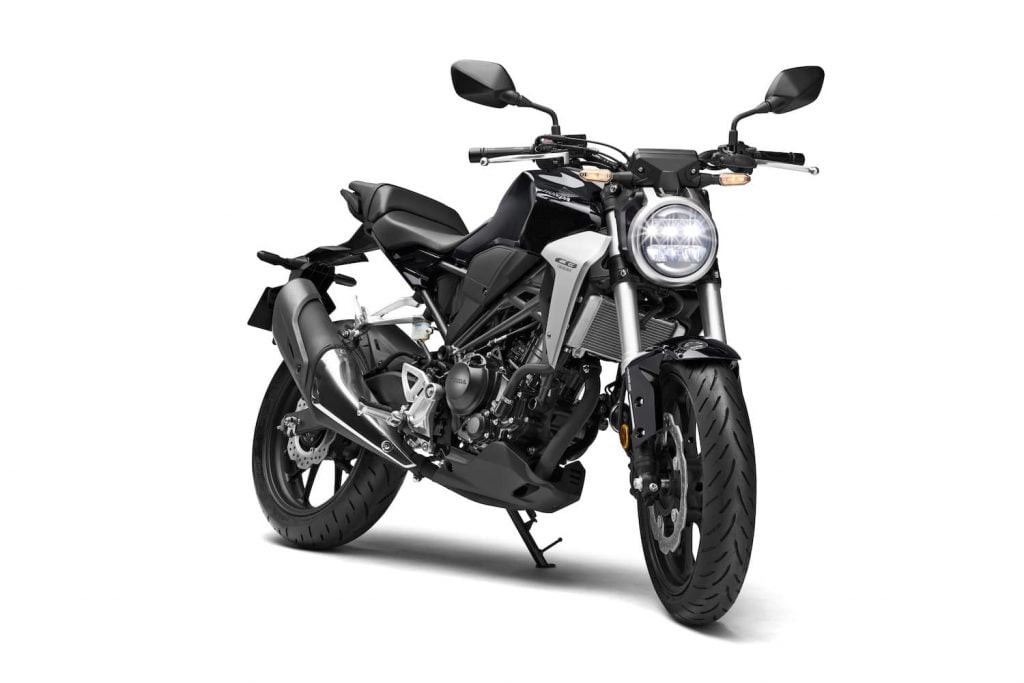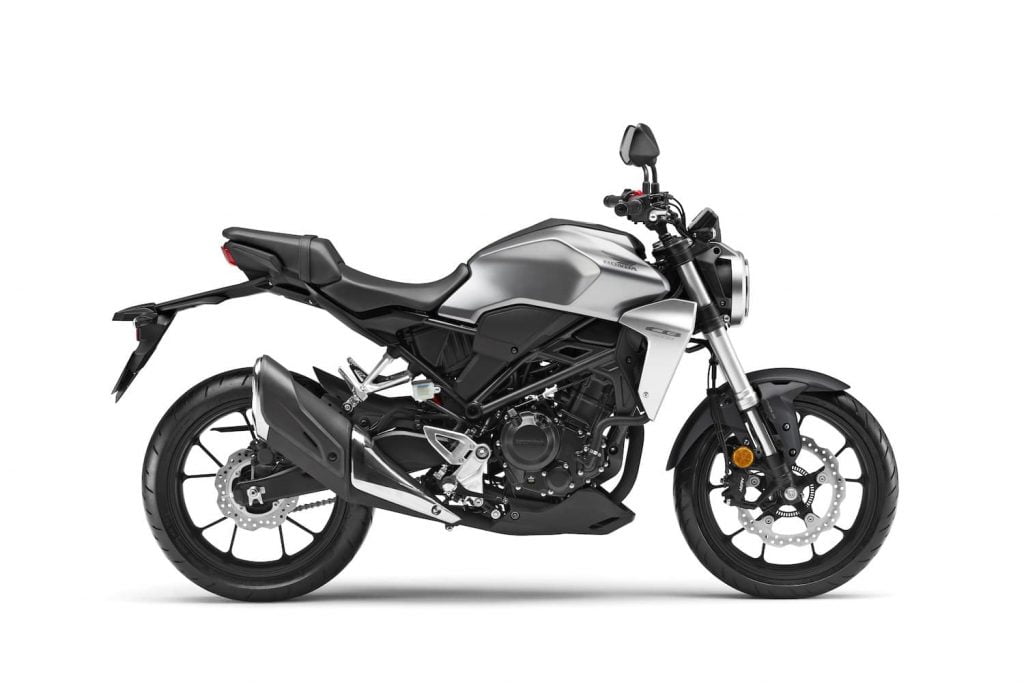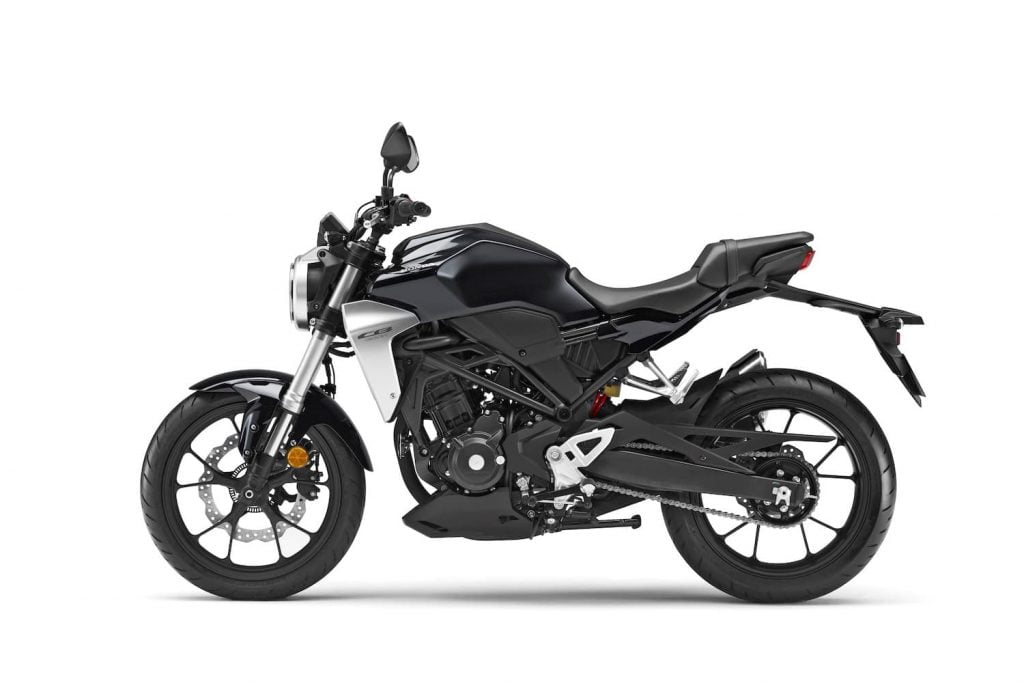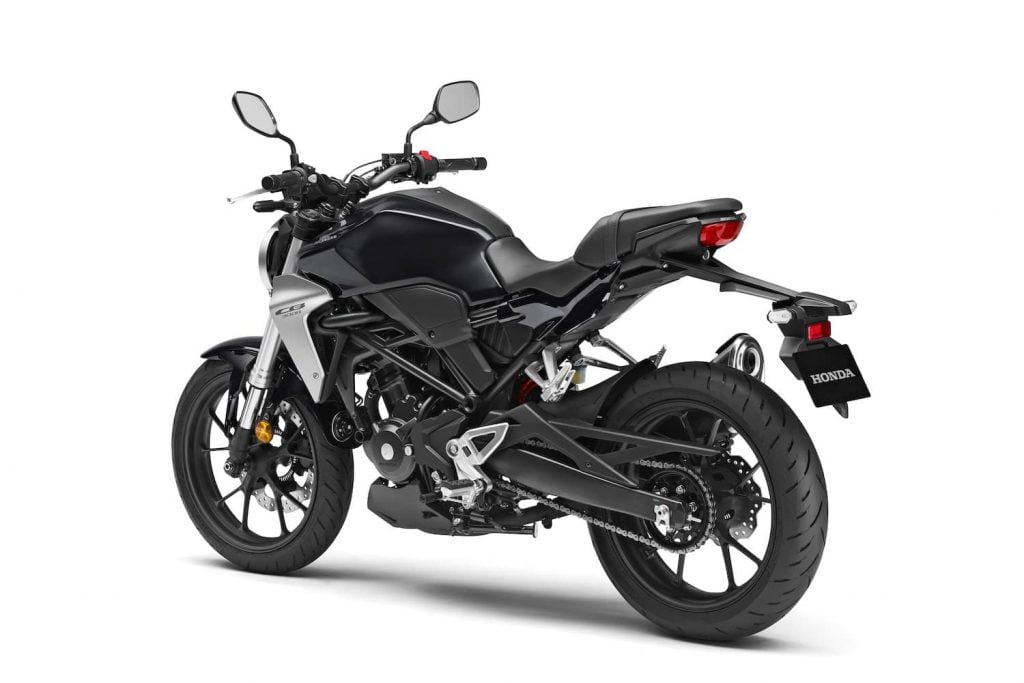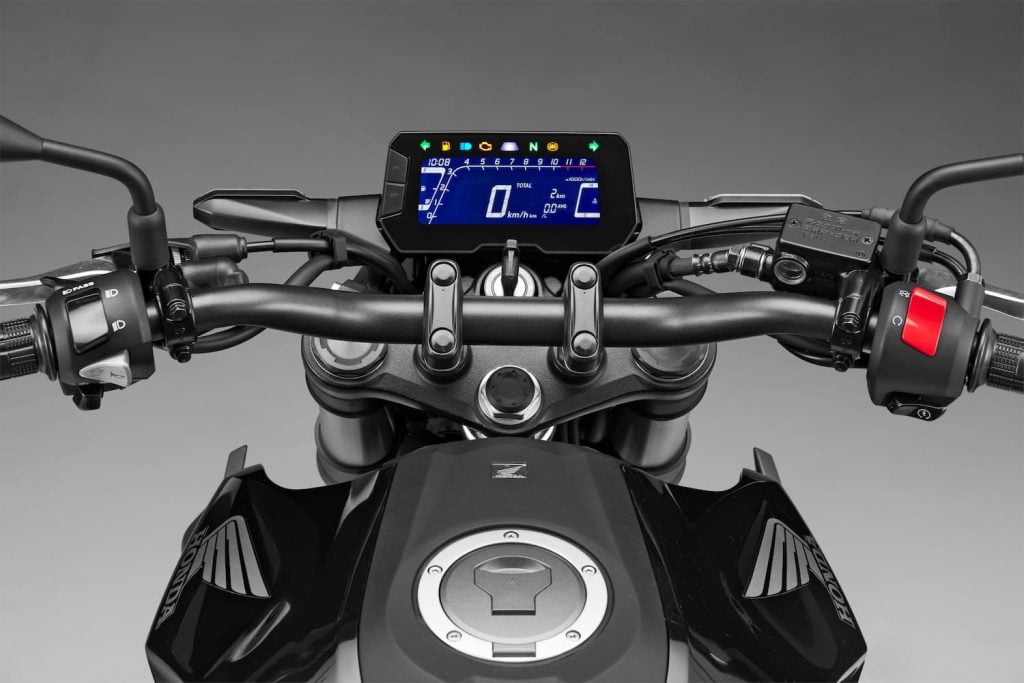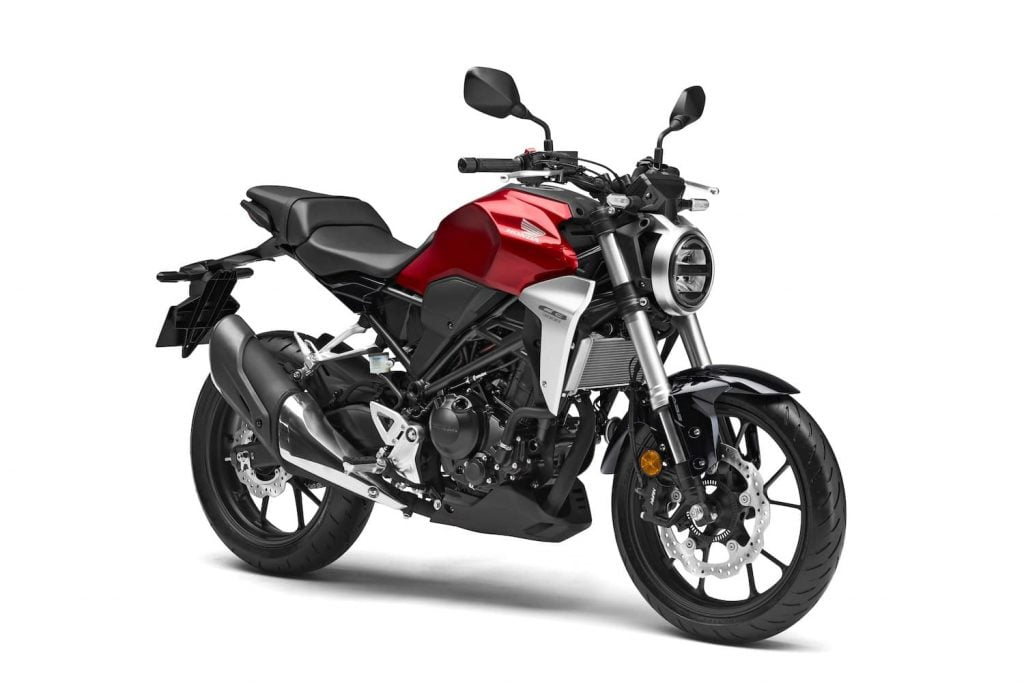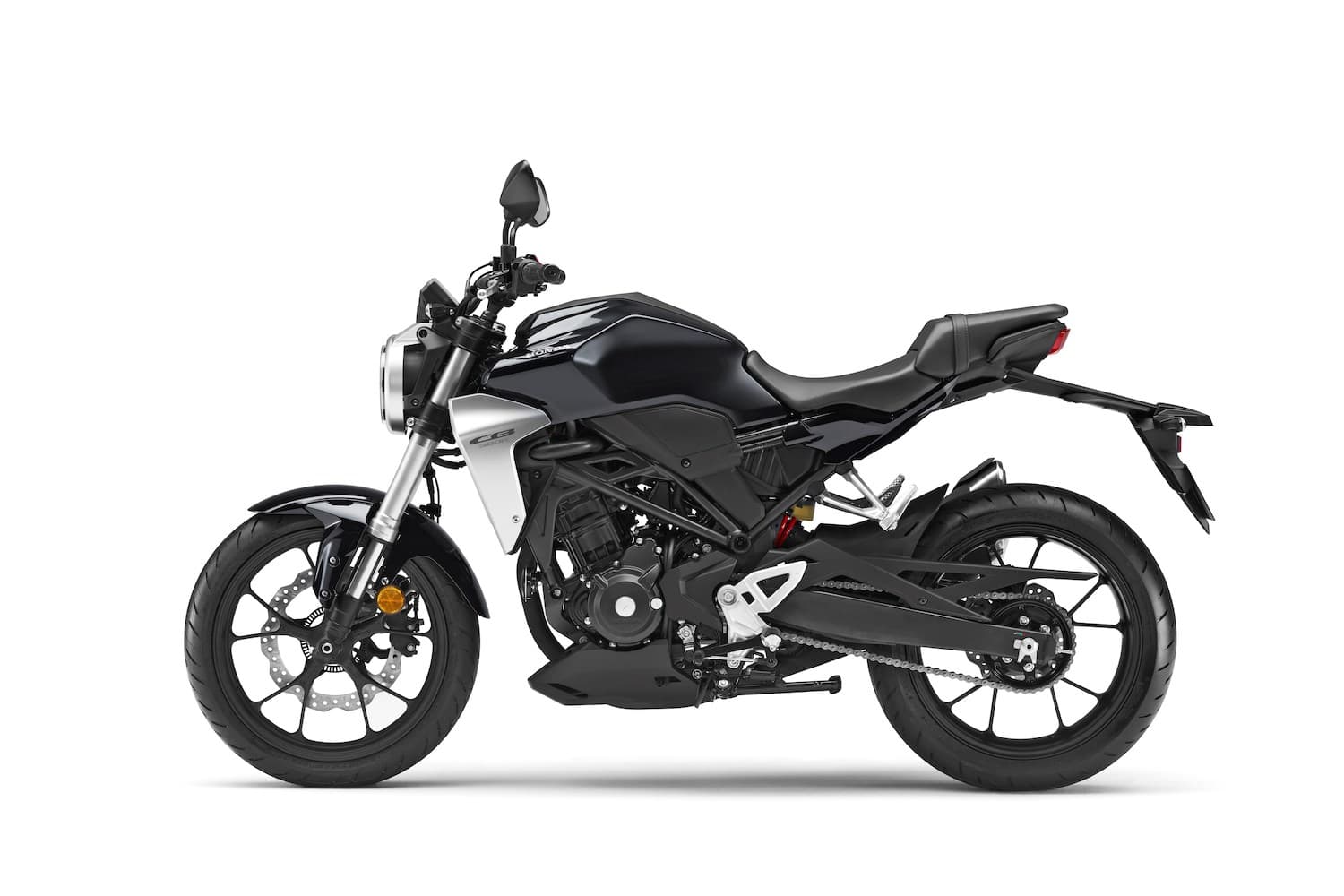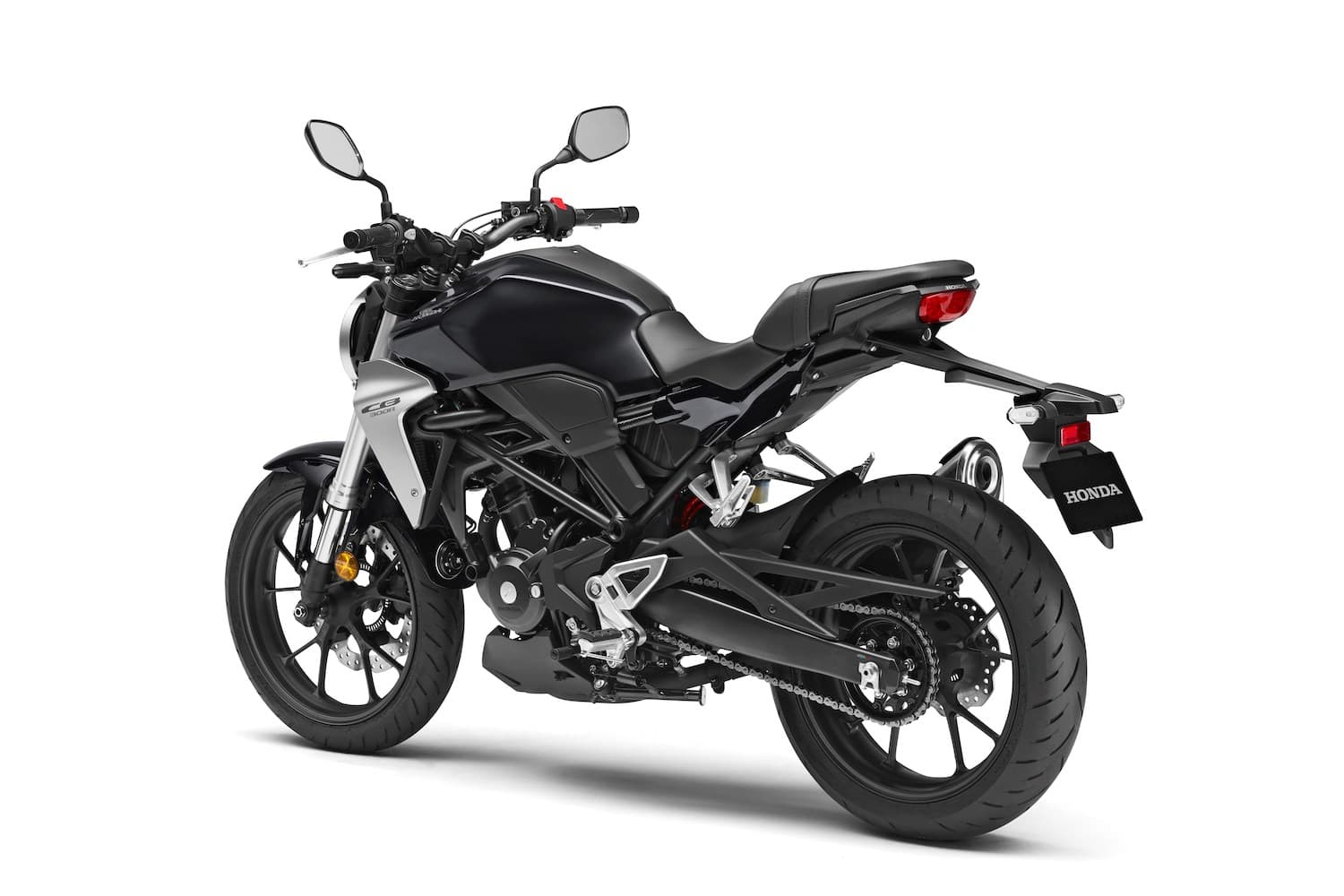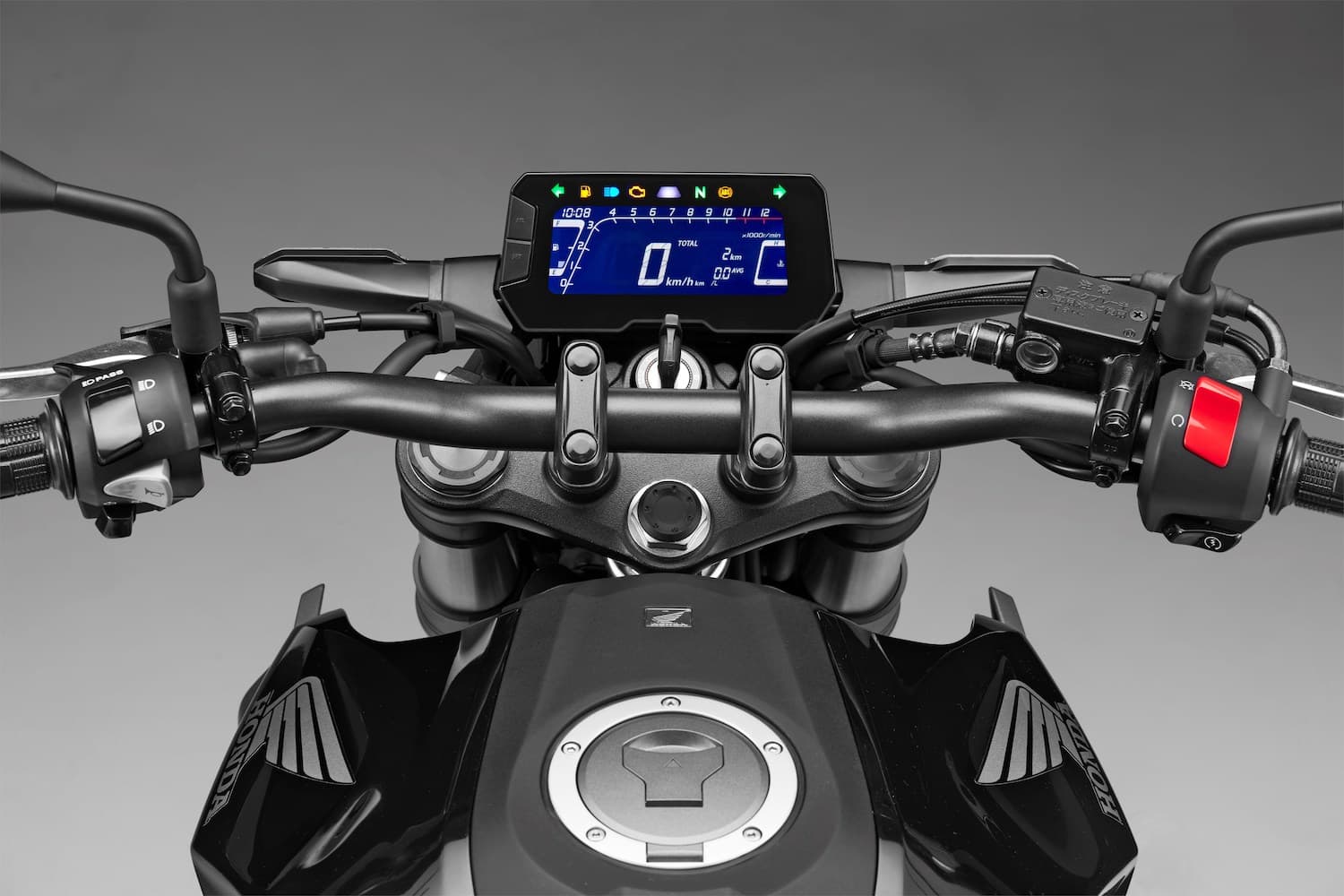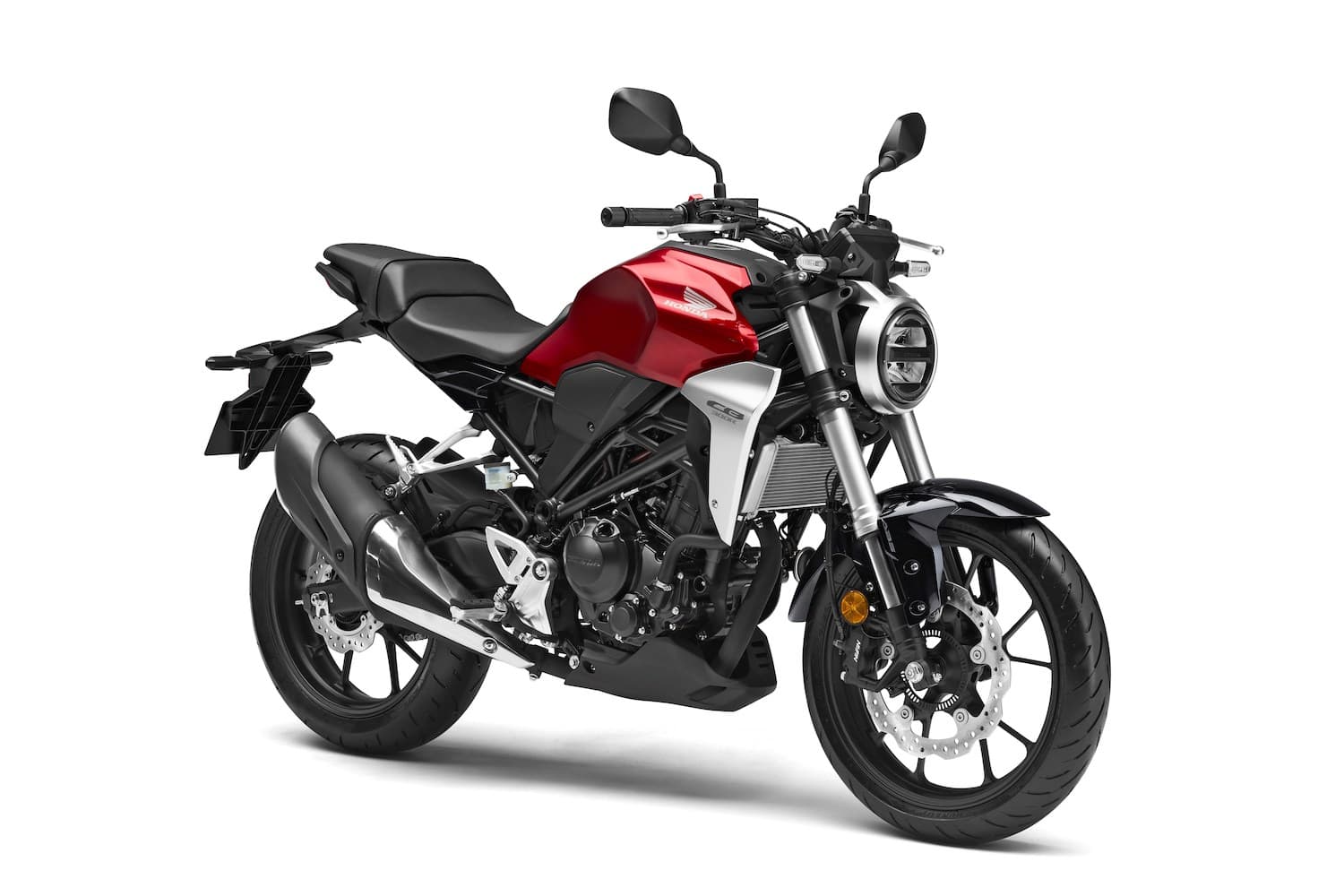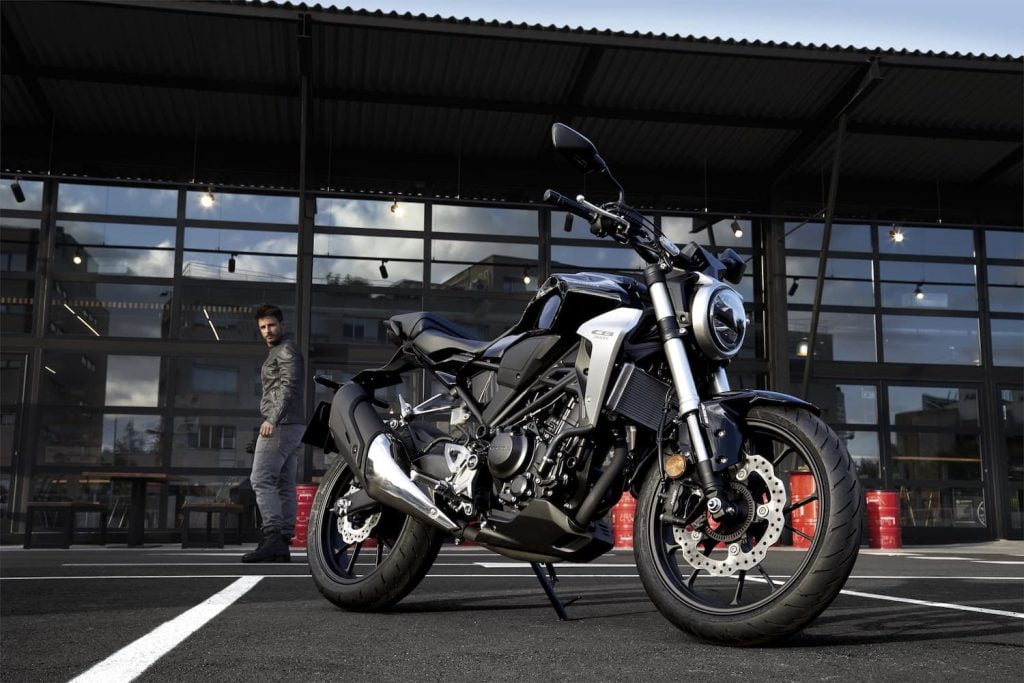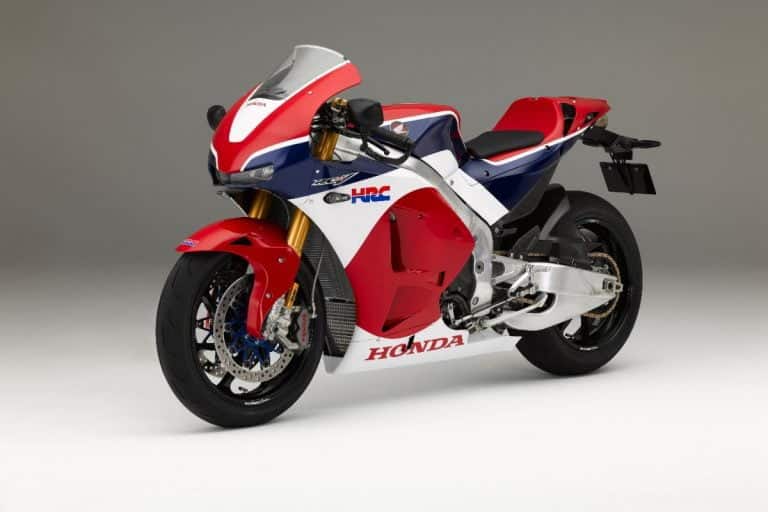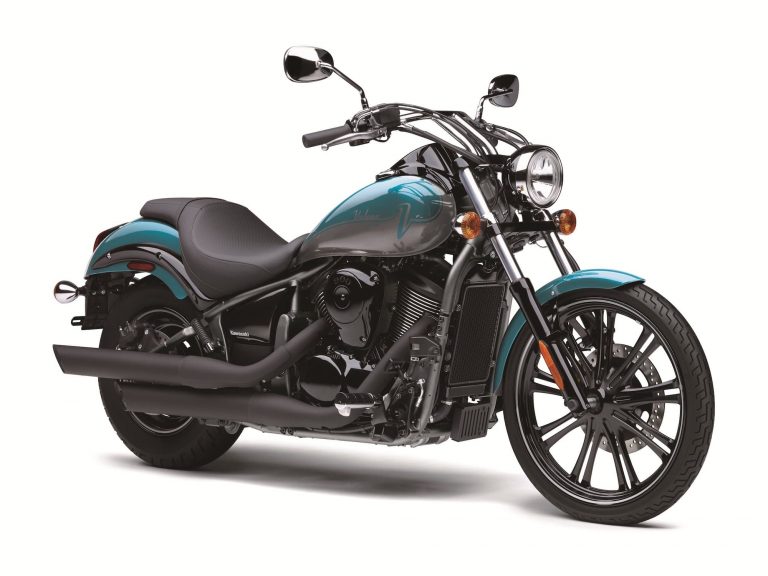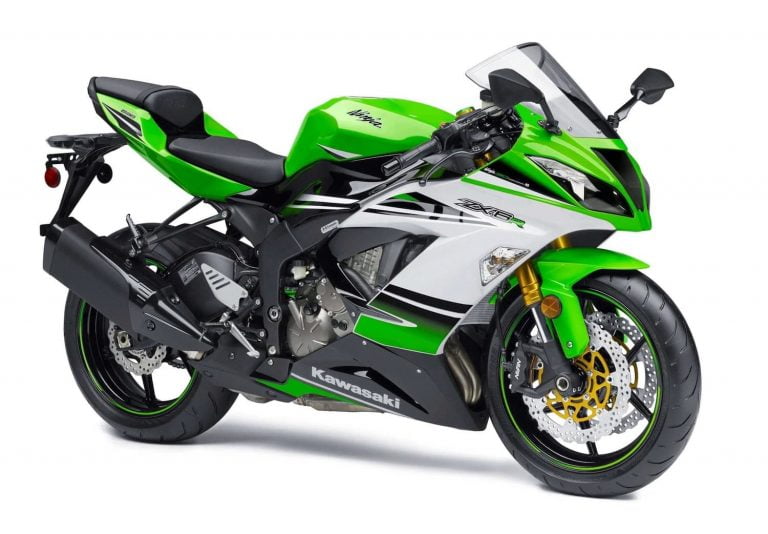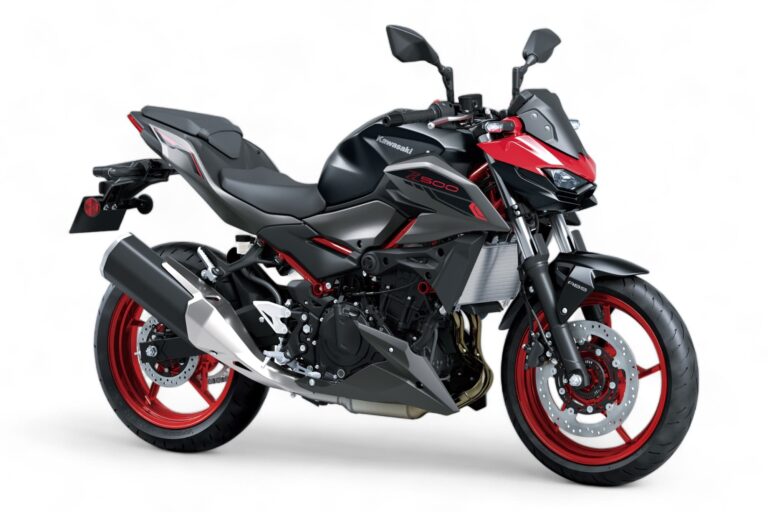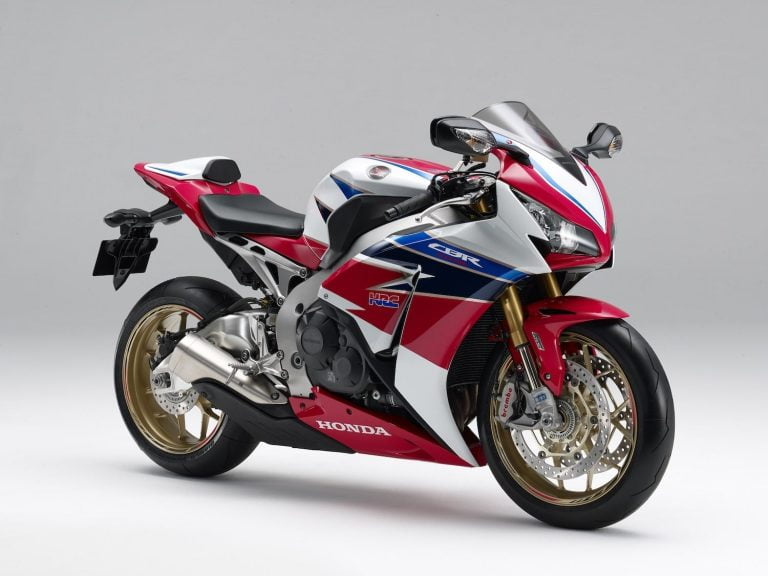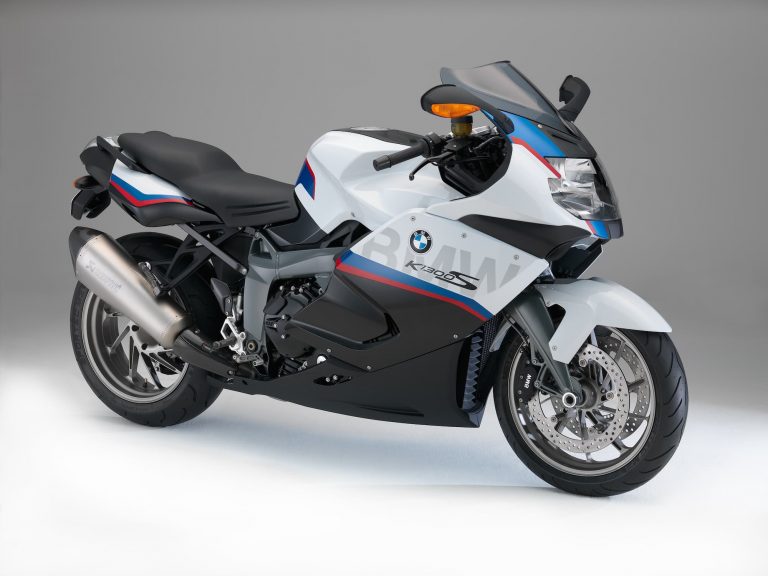Honda CB300R Maintenance Schedule and Service Intervals
This is the maintenance schedule and associated service intervals for the Honda CB300R, Honda’s “Neo Sports” retro standard bike.
The Honda CB300R is naked bike with a 286cc single-cylinder fuel-injected and liquid-cooled engine. It was released in 2018, replacing the previous Honda CB300F — a similar bike, but with more streetfighter-like styling.
The Honda CB300R is generally considered an entry-level motorcycle. It doesn’t set the world on fire with its 23 kw / 31 hp engine, but it’s predictable, efficient, and easy to ride.
The CB300R is also a sibling to the Honda CBR300R, the sportbike variant.
This site has links for things like oil and spark plugs from which we earn a commission (which unfortunately nobody can save, not even us). If you appreciate this work, then please use those links. Thanks!
Honda CB300R Service Intervals
Overall, the Honda CB300R has 8000 mile / 12800 k or annual service intervals between oil changes. At every service, look over the items in the inspection checklist (below) to see what’s due
But Honda does request that you more frequently check a few safety related items, like the brake and clutch.
The CB300R’s major valve service is every 16000 miles or 25600 km. And Honda doesn’t need you to change the spark plug until 32000 miles / 51200 km!
Aside from that, regularly attend to the coolant and brake fluid.
Make sure you regularly attend to the chain — see the notes at the bottom for chain maintenance guidelines.
What you need to service the Honda CB300R
If you want to service your CB300R, you need some basic maintenance tools.
Aside from that, you need the following consumables:
| Part | Honda CB300R spec |
|---|---|
| Oil | Honda recommends 1.5L (1.6 US qt) of SAE 10W-30, JASO T 903 standard MA, API classification SG or higher such as Pro Honda GN4 10W-30. Use a torque wrench to tighten the bolt to 24 Nm (18 lb-ft). |
| Oil filter | Honda’s standard part number for the oil filter is 15410-KYJ-901 (used on many Hondas). You can also use Hiflofiltro HF103 for the oil filter. Use a torque wrench to tighten it to 12 Nm (9 lb-ft). |
| Air filter (OEM) | The OEM air filter part is 17210-K94-T00. You can also use the K&N alternative air filter, whose part number is HA-2819, which is often more available. |
| Spark plugs | Use NGK spark plug part SIMR8A9. Use a spark plug gapping tool to set the gap to 0.8-0.9mm. |
| Chain maintenance | To maintain your chain, Motul chain paste is quite well-liked. There’s also the Motul chain care kit which is affordable and good. |
| Brake fluid | You can use any DOT 4 oil, but Honda recommends Honda DOT 4. |
| Brake pads (front) | OEM front brake pads are part number 06455-K98-E01. Alternative EBC double-hardened front brake pads have part number FA679HH. Note these parts are unique to the CB300R (not CB300F, or CBR300R). |
| Brake pads (rear) | OEM rear brake pads are part number 06435-K98-E01. Alternative EBC double-hardened rear brake pads have part number FA496HH. |
| Coolant | Use Honda Long-life Coolant, which is based on ethylene glycol. |
| Grease | Stock up on lithium soap-based grease and silicone grease to keep pivots and moving parts lubricated and protected. |
Honda CB300R Maintenance Schedule
Below is the maintenance schedule for the Honda CB300R. It’s simplified from the form in the manual, separated out into a major items maintenance schedule and a checklist of things to look over at each service.
Notes:
- At higher odometer readings, repeat the maintenance in the pattern below.
- Honda gives suggested difficulty levels. They recommend wheels and tires be done by a mechanic, but other items can be done by a skilled home mechanic with the right tools.
| x 1000 mi | 0.6 | 4 | 8 | 12 | 16 | 20 | 24 | |
|---|---|---|---|---|---|---|---|---|
| x 1000 km | 1 | 6.4 | 12.8 | 19.2 | 25.6 | 32 | 38.4 | Every |
| Standard service checklist (see below) — Perform all items | ✓ | ✓ | ✓ | ✓ | Year | |||
| Engine Oil — Replace (Pro Honda GN4 10W-30) | ✓ | ✓ | ✓ | ✓ | Year | |||
| Engine Oil Filter — Replace (HF103) | ✓ | ✓ | ||||||
| Air Cleaner — Replace (HA-2819) | ✓ | ✓ | Replace more often when you’re riding in rain/dust. | |||||
| Spark Plug — Inspect | ✓ | |||||||
| Spark Plug — Replace (SIMR8A9) | 32K mi (51.2K km) | |||||||
| Valve Clearances — Inspect / Adjust | ✓ | |||||||
| Radiator Coolant — Replace (Honda Long-life Coolant) | 3 years | |||||||
| Brake pads — Check wear level | ✓ | ✓ | ✓ | ✓ | ✓ | ✓ | ||
| Brake Fluid — Check level / Adjust | ✓ | ✓ | ✓ | ✓ | ✓ | ✓ | ||
| Brake fluid — Replace (Honda DOT 4) | 2 years | |||||||
| Secondary Air Supply System — Inspect | ✓ | |||||||
| Evaporative Emission Control System (if fitted) — Inspect | ✓ |
Standard service checklist
Do the following checks on your Honda CB300R as part of every scheduled inspection.
| Honda CB300R Inspection Checklist |
|---|
| Cooling system — Check for no leaks, and that fans come on |
| Radiator coolant — Check level |
| Fuel Lines — Check condition, correct routing, and for no cracks |
| Throttle operation and free play – Lubricate with Protect all cable life Target free play: 2-4 mm (0.1-0.2 in) |
| Check engine idle speed Target idle speed: 1250 rpm |
| Drive chain slider — Check wear level. Replace as necessary |
| Clutch system — Check for correct function, and clutch free play |
| Brake system — Check for proper function |
| Brake light switch — Check lights come on |
| Wheels/Tires — Check for dents, tire condition, tread depth |
| Suspension — Check for smooth operation, no leaks |
| Headlight aim — Check, re-adjust after adjusting suspension |
| Side stand / Centre stand — Check for smooth function, lubrication condition |
| Steering head bearings — Check for smooth operation |
| Nuts, bolts, fasteners — Check for presence. Replace / retighten as needed |
| Secondary air supply system — Check |
| Crankcase breather (if fitted) — Check, clean as needed |
Maintaining Your Chain on the Honda CB300R
It’s important to maintain your chain on the CB300R, as on any chain-driven motorcycle, but particularly on a bike that may be subject to the extra stress of commuter duty (lots of stop-start movement).
Use a good-quality chain lubricant like Motul chain paste, or a Motul chain care kit which comes with a couple of handy tools to maintain the chain.
Honda recommends you follow the following chain maintenance schedule:
| Chain maintenance item | Every |
|---|---|
| Check drive chain lubrication condition, lubricating if necessary | 600 mi / 1000 km |
| Check drive chain slack, adjusting if necessary | 600 mi / 1000 km |
Notes:
- Do these items (checking/adjusting slack, and checking/applying lubrication) more often if you ride your CB300R in dusty or rainy conditions.
- Always lubricate the chain after washing the motorcycle.
To measure drive chain slack on the CB300R, put the motorcycle on its side stand and on a level surface, and shift the transmission to neutral.
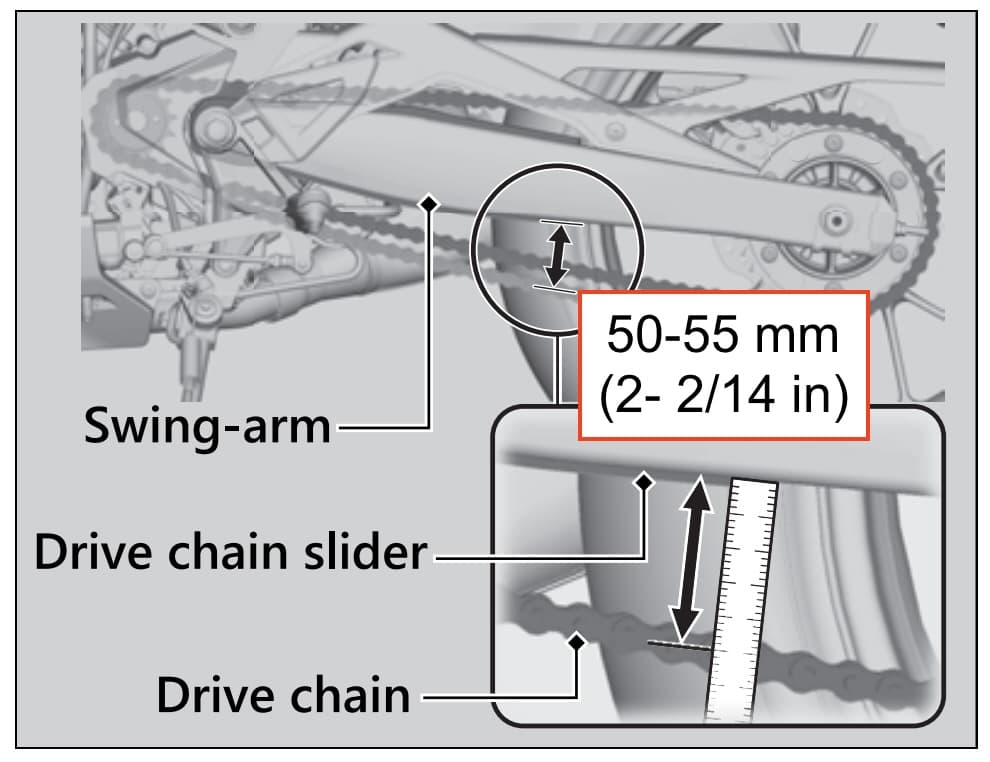
Push down on the chain and measure the distance between the chain and the swing arm at the end of the drive chain slider.
Target slack for the Honda CB300R: 50-55 mm (2-2 1/4 in)
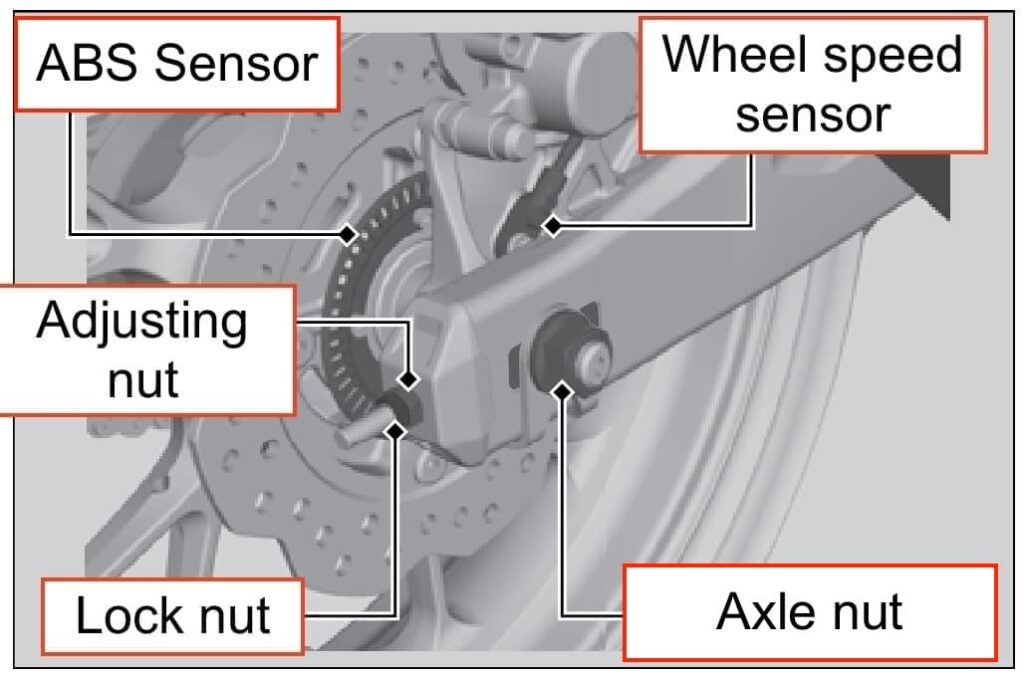
If the chain slack is too great, you need to adjust it. Loosen the axle nut and the lock nuts. Turn the adjustment nuts until the chain slack comes within spec. Make sure that the axle is at the same position (checking the reference marks) on both sides — avoid the chain and wheel being misaligned.
When done, tighten the axle nut to 88 Nm / 65 lb-ft.
Tire size and tire pressure for the Honda CB300R
The Honda CB300R has the following tire sizes standard, as well as the following suggested tire pressures.
| Tire | Size | Tire pressure |
|---|---|---|
| Front | 110/70R17M/C 54H | 29 psi (200 kPa, 2.00 kgf/cm2) |
| Rear | 150/60R17M/C 66H | 33 psi (225 kPa, 2.25 kgf/cm2) |
The CB300R ships with Dunlop GPR-300 tires standard.
About the Honda CB300R
The Honda CB300R made its debut in 2018 in a highly competitive market segment. It replaced the earlier Honda CB300F, with which it shares a similar general platform.
The Honda CB300R’s light weight, low seat, and appealingly useful power makes it a compelling prospect for beginners, and not too boring for more experience riders taking it out for milk runs.
The CB300R is a “Neo-Sports Café” motorcycle, which means it has a round headlight and a kind of modern but still mechanical naked look. It looks similar, to be fair, to the much bigger Honda CB1000R — a fair compliment!
The core of the Honda CB300R is the same as its predecessor: a 286cc liquid-cooled single-cylinder engine. It has dual overhead camshafts, four valves, and a compression ratio of 10.7:1.
The single-cylinder engine doesn’t make a ton of power, but on the flipside, it’s very gentle. The gearing is quite short to ensure you can get off the line quickly.
Honda used a tubular-steel frame with pressed-steel components on the CB300R, but deliberately kept the metal thin in order to keep weight down. It seems to have worked out well since the CB300R weighs in at only 144 kg (317 lb), fully fuelled and ready to go.
The suspension is simple on the Honda CB300R as you’d expect on an entry-level bke. Up front there are inverted 41mm forks that are not adjustable, and there’s a monoshock at the rear with preload adjustability only.
The bike’s braking is provided by a single 296 mm disc up front with a 2-piston caliper. As of 2020, ABS is standard on all bikes — previously, it was an option in some markets.
Manual for the Honda CB300R
The above maintenance schedule comes directly from the user’s manual for the Honda CB300R. It has been modified and simplified for ease of display.

The manual from later years has the same maintenance schedule as the motorcycle has not changed fundamentally.
You can download it from here.
